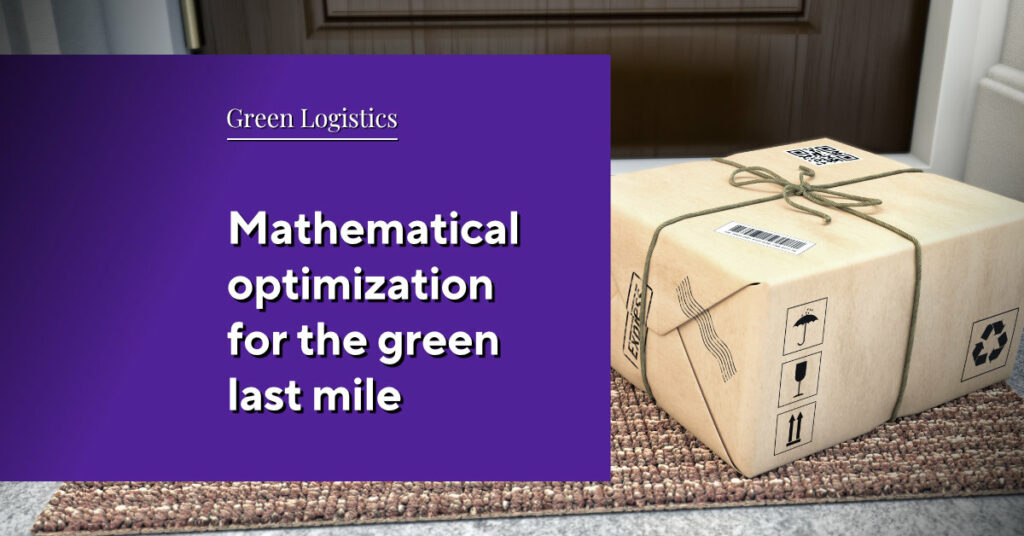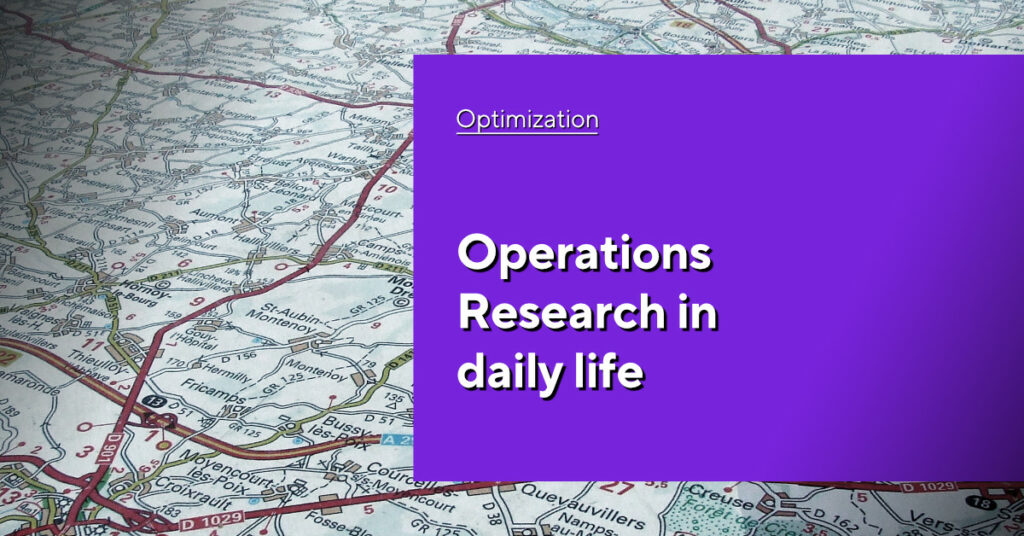How can supply
chains be optimized?
Cost-optimized, long supply chains are incredibly prone to disruption. The events that bring this painfully to our minds time and time again are relentless. This raises the question of how the resilience of modern supply chains can be increased. Because, thanks to significant progress in analytical mathematics as well as the immense computing power of modern computers, planners of logistic networks have a highly capable tool at their disposal: mathematical optimization. If you are not really familiar with this subject, then read on! We would like to demonstrate its use cases and advantages below:
A multi-tool: mathematical optimization
The full strength of mathematical optimization is demonstrated whenever highly complex processes with many variables, constraints and cross-dependencies meet. Sophisticated algorithms very quickly calculate the combination from millions and millions of possibilities which optimally contributes to a previously defined objective – taking into account all existing conditions and constraints, of course. Does this sound too abstract? Then let us explain the advantages of mathematical optimization in more detail:
No. 1: Get a deeper understanding of your business
An optimization project usually begins by having all the relevant data collected and connected to the system. In an initial data analysis, the cause-effect relationships and cross-dependencies, which were previously unknown to even the most experienced planners, are identified. Perhaps there are inefficiencies along the network which only occur under certain conditions and for which there has been no reasonable explanation so far. These can now be identified and systematically remedied. This is an unbeatable advantage on the road towards optimal processes.
No.2: Implement flexibility in planning
We are living in a fast-paced world. Order cycles are becoming ever shorter, customers expect short delivery times and various external disruptive factors make planning more complex. If this is done manually, there is a risk that the quality will decrease with every rescheduling and that you will move further away from the planning optimum. By deploying mathematical optimization, you can change your plans at the touch of a button and still be sure that your plan optimally contributes to your defined objectives – no matter how often you plan and how often you have to reschedule at short notice. This is especially appropriate for tasks at operating level such as route scheduling, where you can gain significant efficiency with mathematical optimization.
No. 3: Enable the optimization of several objectives
With regard to disruption and resilience, this example is virtually a classic: how can diametrically opposed objectives such as cost efficiency and resilience be accommodated in one single plan? This is virtually impossible to plan manually. With mathematical optimization, however, your system can calculate the most resilient, cost-efficient supply chain for you – in other words, the optimal intersection of both targets. There are no limits to the number of optimization objectives. Any number of target variables can be included in the calculation. For example, the CO2 factor could also be included as a relevant batch size in the optimization of the supply network.
No. 4: Ensure maximum planning quality
We already looked at planning quality in point 2 on flexibility. The particular charm of mathematically optimized plans is that they are easy to create and are of the highest quality. Whether it’s global or multi-local sourcing, you can rest assured that the calculated plan is optimally in line with your strategic objectives with results that are comprehensible and reproducible at any time.
No. 5: Be able to predict the future
Being able to see into the future would be a huge advantage for any company. With the help of Predictive Analytics and machine learning, you can predict future events based on historic data which is the next best thing to seeing into the future. For example, past process disruptions can be analyzed based on real data using machine learning to identify patterns. With this information, an algorithm could detect potential disruptions and alert you to them early on. This means your business could always implement measures to safeguard your supply chain before any damage occurs.
More interesting articles
No. 6: Obtain sound recommendations for action
If we refer to the example from No. 5, the system would even be able to provide you with sound recommendations for action on how to secure the endangered supply chain based on Prescriptive Analytics. Here, the optimized review of the strategic goals are also considered. For example, the system would suggest a distribution of the order quantity among only those suppliers who are the most cost-effective under the new premises. The supply chain would thus remain maximally efficient, even under the changed circumstances.
No. 7: Improve strategic planning withe scenarios
What-if scenarios are one of the most powerful tools available when it comes to strategic planning. With these, possible decisions and their effects on entire networks can be simulated. As this is based on real data, the results can be broken down into all business-relevant KPIs. For example, transparency could be achieved at any time as to how strongly measures to secure the supply chain would affect the company’s results.
Let us come to a conclusion
In our brave, new world that is changing ever faster, planners are constantly competing to keep complex supply networks as efficient as possible while at the same time safeguarding them against disruptions. The frequency with which disruptive events keep occurring, together with the ever-increasing complexity of modern supply networks, is pushing conventional planning to its limits. Mathematical optimization provides a powerful tool to counter this development. Planning becomes faster, more efficient and safer. At OPTANO we have a rule of thumb: The more complex a network is, the more hidden potential can be leveraged with mathematical optimization.
If you think your networks have hidden potential, then maybe it’s time to think about how to unleash it. We can help you here. Why not come and discuss it with us?
Do you already know our factsheet on this topic?

What are the factors which contribute towards a resilient supply chain? These are outlined in our factsheet.
To obtain our factsheet, all you need to do is enter your contact details in the space below. A pop-up window will then open to download the whitepaper. Please note that by providing us with your email address, you agree that we may contact you on this topic. You may revoke this agreement at any time by contacting privacy@optano.com.






